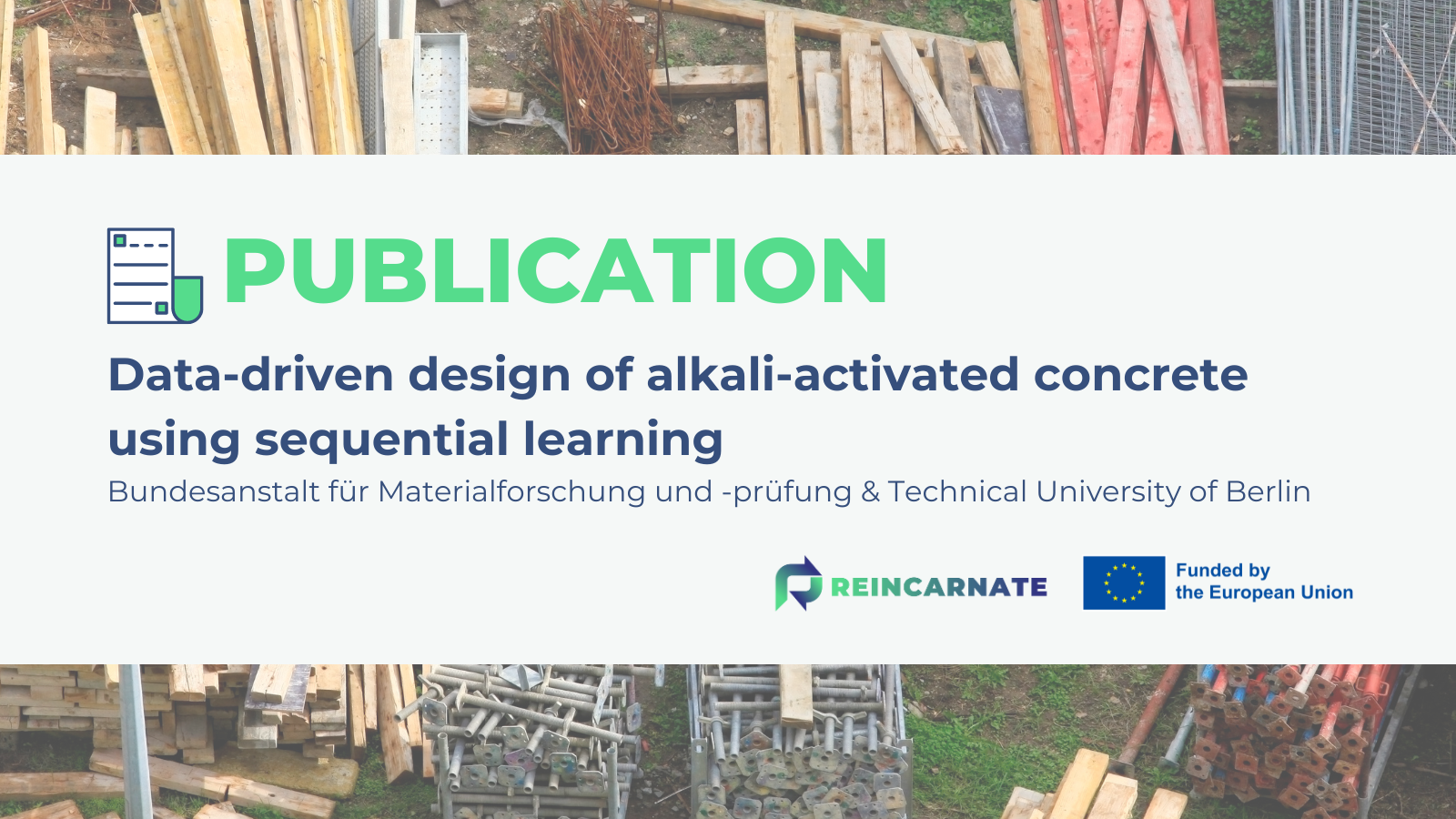The Bundesanstalt für Materialforschung und -prüfung (BAM) and the TU-Berlin team have published the first version of the paper entitled “Data-driven of Alkali-activated concrete using Sequential Learning (SL)” in the Journal of Cleaner Production. The publication presents a novel approach for developing sustainable building materials through ecologically informed SL, proving that by adopting a data-driven approach, sustainable building materials can be developed much quicker than commonly anticipated.
Read the paper here.
With a total of 1367 formulations of different types of alkali-activated building materials, including fly ash and blast furnace slag-based concrete and their respective compressive strength and CO2 footprint, compiled from the literature, the researchers have developed and evaluated this data-driven approach. After that, a comprehensive computational study was undertaken to assess the efficacy of the proposed material design methodologies, simulating laboratory conditions reflective of real-world scenarios. The results found by the team indicate a significant reduction in development time and lower research costs enabled through predictions with machine learning, challenging common practices in data-driven materials development for building materials.

Data scientist and main author of the paper, Dr Cristoph Völker, expressed, “We are happy to see that the approach has a low adoption threshold across various research labs – making a change possible today! For instance, six high-performance, waste-based supplementary materials with a complex composition have recently been discovered at our leading partner, The Technical University of Berlin. The task, which would have required more than 40.000 experiments with a classic screening approach, took only 30 material samples. This shows the level of complexity that is unlocked with a data-driven design approach!”
Furthermore, the discussions and conclusions of the study emphasised that compliance with the Paris climate agreement will only be possible by reducing emissions from a specific material production – cement. However, the high variability of alternative feedstocks and the complexity of the formultions make it challenging to find well adjusted mix designs in practice. A classical experimental design approach reaches its limits, as thousands of experiments would be required to cover all viable combinations of starting materials. This is where SL comes into play: It shifts a large part of the task to ML predictions.
The new design approach is relevant for a project such as Reincarnate. It can be immediately implemented into practical applications and translated into significant advances in sustainable building materials development. We will continue to embrace data-driven innovation as a tool for designing our sustainable future in the construction industry. These are Reincarnate’s contributions to the fight against climate change and transforming the sector from a linear into a circular one.
Read the paper here.
Do you want to learn more about Reincarnate?
Subscribe to our newsletter and follow us on LinkedIn and Twitter, so you don’t miss a thing!
